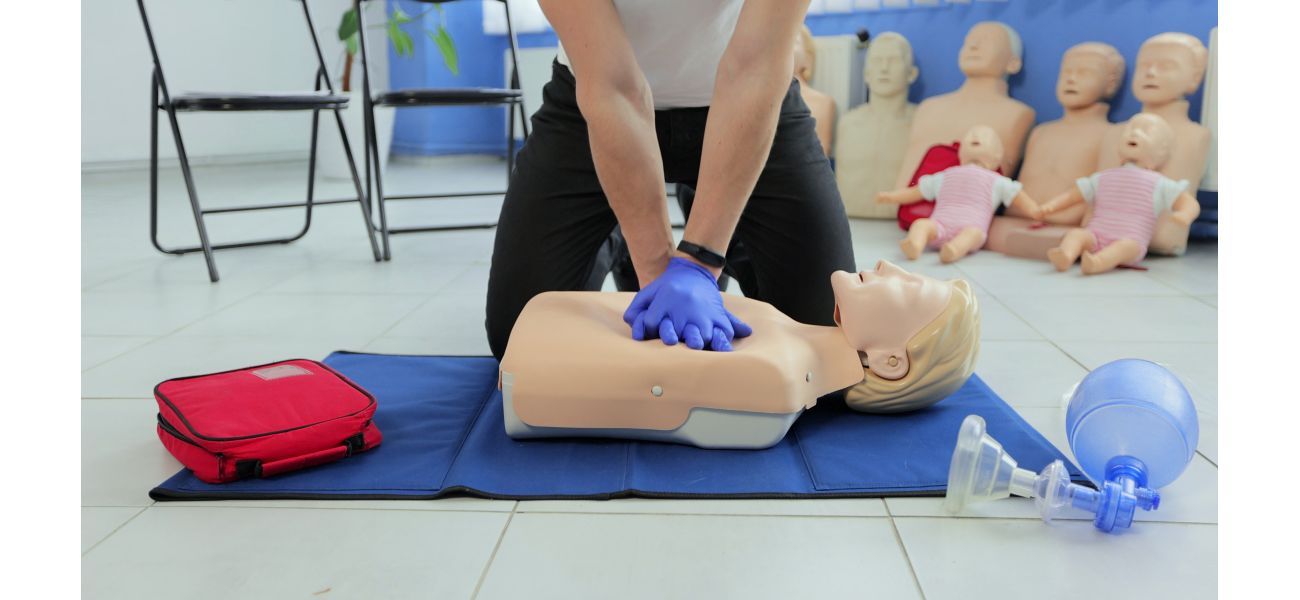Manikins could be the reason for women's lower chances of getting CPR.
Experts think CPR manikins lacking key features may be why women receive less lifesaving help during cardiac arrest.
November 22nd 2024.

According to researchers, one of the main reasons why women are less likely to receive life-saving CPR from bystanders is because most CPR manikins lack a crucial feature: breasts. In fact, studies have shown that women are 14% less likely than men to receive CPR and are more likely to die after experiencing cardiac arrest. The team at Bond University believes that this disparity is due to the fact that 95% of CPR manikins do not have breasts or are flat-chested.
Dr. Jessica Stokes Parish, a member of the research team, explains that previous studies have revealed that some bystanders are hesitant to provide CPR to women in public settings because they fear being accused of assault or for cultural reasons. This is a serious concern that needs to be addressed. Dr. Stokes Parish believes that incorporating breasts into CPR training on manikins could help break down this stigma.
In their study, the team examined 20 different CPR manikins on the market. Surprisingly, only one of them was modeled after a female with breasts. The rest were either male or had no specified gender. Interestingly, the world's first CPR manikin, created in 1960, was actually based on a female - a deceased teenager who was found floating in the Seine river in Paris. This shows that the lack of representation for female CPR manikins has been an ongoing issue for decades.
Dr. Stokes Parish, an expert in simulation-based medical training, believes that this research highlights the need to reconsider how first aid is taught and what equipment is used. She stresses the importance of all simulation-based training being equitable and resulting in improved health outcomes for everyone, regardless of their gender, age, or ethnicity.
Thankfully, some companies are already taking steps to address this issue. For example, Prestan, a CPR manikin company, has recently released female manikins. Another company, Paeds Education, has taken it a step further by adding breasts to their CPR trainers in order to make their workshops more educational. However, there is still a long way to go in terms of providing equal representation for both men and women in CPR training.
Overall, this research brings attention to an important issue and highlights the need for change. It is crucial that we continue to push for more inclusive and effective CPR training that benefits everyone, regardless of their gender or any other factors.
Dr. Jessica Stokes Parish, a member of the research team, explains that previous studies have revealed that some bystanders are hesitant to provide CPR to women in public settings because they fear being accused of assault or for cultural reasons. This is a serious concern that needs to be addressed. Dr. Stokes Parish believes that incorporating breasts into CPR training on manikins could help break down this stigma.
In their study, the team examined 20 different CPR manikins on the market. Surprisingly, only one of them was modeled after a female with breasts. The rest were either male or had no specified gender. Interestingly, the world's first CPR manikin, created in 1960, was actually based on a female - a deceased teenager who was found floating in the Seine river in Paris. This shows that the lack of representation for female CPR manikins has been an ongoing issue for decades.
Dr. Stokes Parish, an expert in simulation-based medical training, believes that this research highlights the need to reconsider how first aid is taught and what equipment is used. She stresses the importance of all simulation-based training being equitable and resulting in improved health outcomes for everyone, regardless of their gender, age, or ethnicity.
Thankfully, some companies are already taking steps to address this issue. For example, Prestan, a CPR manikin company, has recently released female manikins. Another company, Paeds Education, has taken it a step further by adding breasts to their CPR trainers in order to make their workshops more educational. However, there is still a long way to go in terms of providing equal representation for both men and women in CPR training.
Overall, this research brings attention to an important issue and highlights the need for change. It is crucial that we continue to push for more inclusive and effective CPR training that benefits everyone, regardless of their gender or any other factors.
[This article has been trending online recently and has been generated with AI. Your feed is customized.]
[Generative AI is experimental.]
0
0
Submit Comment





